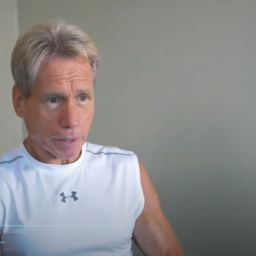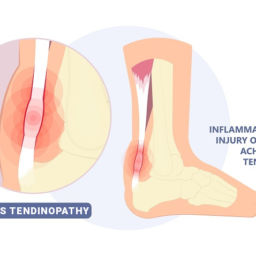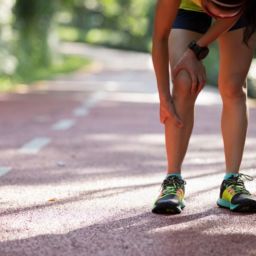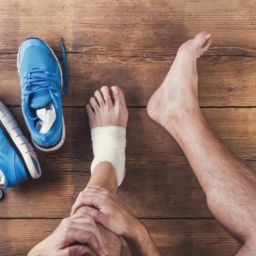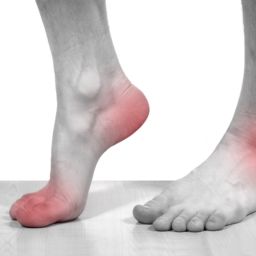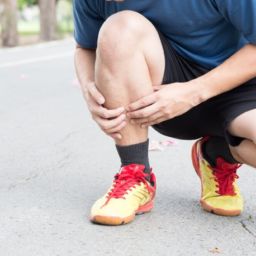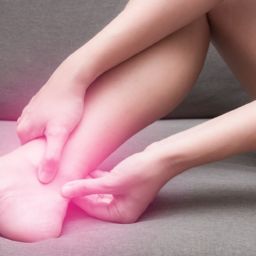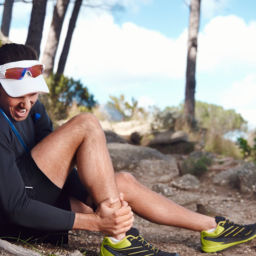
Larry Bird, Kobe Bryant, Isiah Thomas, Kevin Durant, Dan Marino, David Beckham. What do these famous athletes have in common?
They all had injuries to the Achilles tendon during their careers. But there are many other well-known and not so well-known individuals who have had this problem. For every Al Gore, Dwayne Johnson (AKA The Rock), Brad Pitt, or George Clooney there are multitudes of other less-famous “weekend warriors” who have injured this important part of the musculoskeletal system. In fact, Achilles-related pain in the back of the lower leg is a common problem for many Floridians, especially those involved with sports that require running, jumping or walking on inclined surfaces (eg. golf). This is because this tendon is subject to significant stress with these activities it may lead to Achilles Tendonitis.
The Achilles is the largest tendon in our body and it connects our calf muscles to the heel bone. When the calf muscles contract a properly functioning Achilles allows the foot to flex downward at the ankle joint by pulling the back of the heel upward. This is critical for the “push off” phase of running or jumping. At the heel area the Achilles gets protection from friction by way of a thin, fluid-filled sac (called a bursa) that lies between the tendon and the heel bone above the point where the tendon attaches to the bone. Another bursa lies behind the tendon at the point of insertion and protects the Achilles from direct pressure there.
However, when compared to other tendons in the body the Achilles is subject to a slower recovery time when an injury occurs. This is because most tendons in the human body are surrounded by a specialized tissue called a sheath that protects the tendon and also augments the blood supply to it. The Achilles is unusual not only due to its length but also because of its lack of a sheath. This explains the extended recovery time that is necessary for an injured Achilles tendon to fully heal otherwise it results in Achilles Tendonitis.
INJURY TYPES
Injuries to the Achilles (called tendinopathies) are broadly divided into those that are acute (of sudden onset) and those that are chronic (related to an extended period of overuse). The Achilles tendon is considered to be “mechanoresponsive”. This means that the tendon adapts to the stress put on it slowly over time. A slow increase in stress over a long period is generally tolerated well. But a substantial increase in a relatively short amount of time can lead to an acute tendon tear. Alternatively, a moderate increase in stress over a longer time frame (overuse) can lead to a condition called tendinosis. In tendinosis, the Achilles degenerates and scars. Either of these forms of Achilles tendinopathy can happen in well-trained athletes, “weekend warriors“, and even non-athletes, especially as we age. An Achilles tendon tear is often described like being hit in the back of the heel with a stick. An audible “pop” may be sensed as well.
This often results in an immediate inability to bear weight on that side. On the other hand, the early signs of an overuse type of injury like tendinosis are soreness and stiffness. Left untreated Achilles tendinosis can progress to cause significant discomfort whenever the foot is flexed down against resistance (eg. pressing down on the gas pedal to accelerate while driving). Also the two Achilles’ bursal sacs are prone to develop an inflammatory condition (bursitis) that is another form of chronic injury that can limit ones ability to wear certain types of shoes.
EFFECTIVE TREATMENTS FOR ACHILLES TENDONITIS
Recent research has shown that the most effective way to resolve injuries associated with the Achilles is to begin treatment early. For a suspected tear, this means to seek medical attention within twenty-four hours. Immobilization is usually recommended with surgical intervention and sometimes necessary. As the first signs of overuse injury (tendinosis or bursitis) are typically morning stiffness and minor discomfort in the back of the lower leg, it is recommended to avoid activities and shoes that aggravate the pain and to seek attention from a sports medicine provider if these symptoms persist for more than one week.
Here at Certified Foot and Ankle Specialists, our team of doctors is trained to diagnose and institute state-of-the-art, effective treatments for Achilles tendinopathies. The modalities we employ are based on the best scientific evidence available.
If you believe you have injured your Achilles and are suffering from Achilles Tendonitis, we are available at our multiple offices to help you heal and get you back doing what you enjoy as soon as possible.
By Dr. John Hurchik, DPM
Certified Foot and Ankle Specialist – Brandon | Fort Myers, Florida


